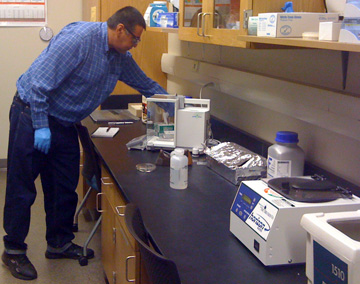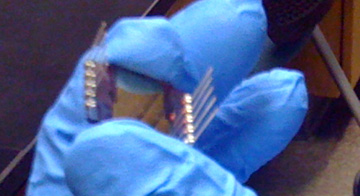Researcher’s article on organic solar cells published
The work of Omar Abdulrazzaq, a doctoral student in the Center for Integrative Nanotechnology Sciences at UALR, was published in the August edition of Energy Technology.
Abdulrazzaq’s research is focused on polyaniline, an organic compound known for its low weight, conductivity, flexibility, and relatively low expense. 
Using various levels of camphor sulfonic acid on the compound, Abdulrazzaq sought to optimize its hole-transport layer properties to determine its potential use as a replacement for PEDOT:PSS hole-transport layers, a polymer mixture with electrically neutral repeating units and a fraction of ionized units.
The study of these materials at the Nanotechnology Center moves researchers closer to maximizing the efficiency of organic solar cells, in an effort to replace silicon-based solar cells.
Silicon is a synthetic that is heavier and not as energy efficient, according to Abulrazzaq. Organic solar cells represent the “next generation” in solar cell technology, he said, because of their lower weight and considerable flexibility.
“The traditional use of PEDOT:PSS in organic solar cells is at a disadvantage due to the compound’s acidic nature, which could cause a short circuit in the current or degrade the active layer of the solar cell,” said Abulrazzaq. “These factors drive the need for an alternate hole-transport layer that can prolong the lifetime of an organic solar cell.”
Abdulrazzaq used several analytical methods to understand the effects of the protonation level on the electrical, optoelectronic, and structural characteristics of the compound’s hole-transport layer.
His article, “Optimization of the Protonation Level of Polyaniline-Based Hole-Transport Layers in Bulk-Heterojunction Organic Solar Cells,” was published by Wiley, which hosts a broad, multidisciplinary collection of online resources.
His article may be found at Wiley Online Library.